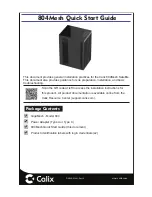
62
Explanations on the configuration bits:
• Bit 7:
If this bit is set, each event that the transponder reader recognises is directly output
on the serial interface.
• Bit 6:
If this bit is set, the transponder reader behaves as if the transponder had been read
at the memory position „0“ when the button is pushed. This is important, e.g. when you
want to clearly recognise the start or end of an opening process by pushing a button
in the event tables. For this, a specific (also fictitious) transponder can be saved in
storage location „0“, which is easy to recognise and select in the event tables. This
bit must not be set at the same time as bit 5.
• Bit 5:
Setting this bit permits switching off the relay by pushing the button. This may be of
benefit if a long switching time has been set, but the relay is to be switched off before
the end of this time. This process is saved with the transponder number „0“ in the
event tables (just like the „AUTO/OFF“ event).
This bit must not be set at the same time as bit 6.
• Bit 4:
Setting this bit activates the relay output. If switching of the relay is to be prevented
when a valid transponder is recognised as well, this bit must be set to „0“.
• Bit 3:
Bit 3 specifies which type of events is stored in the event storage:
Bit 3 = „0“ -> „Minute“ mode: Everyevent is saved with resolution to the minute. If
a transponder is pending at the aerial module for an extended period of time, this
event is recorded every minute. In this case, it is „more memory-saving“ to switch to
„IN/OUT“ mode. When using „ON/OFF“ mode, there is no difference between „Minute“
mode and „IN/OUT“ mode.
Bit 3 = „1“ -> „IN/OUT“-mode: When bit 3 has been set, only those events that lead
to a change of the condition of the transponder reader are saved. This means that
extended pending of a transponder at the aerial module in impulse mode will only
lead to saving of the time of application and the time of removal of the transponder. In
„ON/OFF“ mode, the time at which the relay is switched on and off is saved.
















































